Conventional histories of deathrock dry up around 1986. There’s good reason for that. The orthodox approach to the subject is to describe it as a specific moment in Southern California punk. As a style of music, however, deathrock has persisted into the present, with interest and activity waxing and waning as the years have gone by.
The first deathrock revival began in 1998 and petered out around 2004. The second and ongoing deathrock revival began a few years ago. (Of course, bands existed during the dry spells, threading together the peaks and troughs.) Explaining this all requires some backstory. This article series deals with events that occurred on the east side of the Atlantic during deathrock’s heyday, as one branch of the British punk family tree transformed into the European parallel of American deathrock. The third and last installment will cover the evolution of deathrock over the past decade in its revivalist forms, from the late 1990s until now.
I. BRITISH PUNK TURNS DARK
Any discussion of deathrock will start with the watershed years of 1976-1977 punk. (Let’s ignore for the moment pre-punk influences on the genre, which will be mentioned later.) On the West side of the pond, the Cramps’ influence loomed large. (“I thought if we were lucky,” Rozz Williams of Christian Death mused, “people would think we were like the Cramps or Alice Cooper. That’s what I was into.”) On the British side, who mattered was the first UK punk band to release a single, an LP, and to tour America: The Damned.
In 1976, The Damned found in Dave Vanian an especially compelling, if unconventionally eerie, frontman. David Letts chose the last name “Vanian” by abbreviating the word “Transylvanian,” and used the band’s frontman spotlight to showcase his taste for dressing up like the Hammer horror films version of Dracula. Founding member and original Damned guitarist Brian James explained, “Long before there was a recognized gothic look, there were fans turning up at [Damned] shows dressed like Dave – which was brilliant at the time, because it lifted us right out of the typical punk rock band thing. Other groups had the safety pins and the spitting and the bondage trousers, but you went to a Damned show, and half the local cemetery would be propped up against the stage.” In other words, if you wanted to see a member of the undead fronting a punk rock band in 1976, The Damned were for you.
Due to early and continuous touring – including shows with bands as diverse as Minor Threat and Motorhead – The Damned’s influence was felt far and wide. In her recent Violence Girl autobiography, L.A. punk pioneer Alice Bag writes of seeing The Damned in Los Angeles in 1977, months before the Sex Pistols set foot in California: “The lead singer of The Damned, Dave Vanian, was a dark, handsome vampire who mesmerized the audience, though occasionally the spell would break and we’d be drawn into the insane world of the bassist, Captain Sensible, whose wild antics seemed slightly incongruous with those of the brooding Vanian. Somehow, the band managed to balance these two larger-than-life personalities. At the end of the night, Captain Sensible was naked, the audience was throwing change up on the stage and the age of L.A. punk was well underway.”
Indeed, Bag’s L.A. bandmate and friend Patricia Morrison would go on to play bass for The Damned and, incredibly, marry Vanian — after enduring a very public tour of duty in goth rock juggernauts the Sisters of Mercy. Similarly, Bryan James would leave The Damned, join up with Stiv Bators from the Dead Boys and, with Dave Tregunna of Sham 69 in tow, would start the gothic rock powerhouse Lords of the New Church. Relationships like this underscore to what degree seemingly disparate phenomena as the American punk and British gothic postpunk scenes were really not that far removed.
By 1979 a sea change in British punk was underway, and this mirrored developments in the nascent deathrock scene of California. A large segment of British punks had grown tired of 3 chord thrash and were proceeding down gloomier avenues. Siouxsie and the Banshees’ second LP, 1979’s still-underrated Join Hands, premiered songs like “Premature Burial” with a heavy use of flanger by guitarist John McKay; this guitar sound would become a staple sound of dark punk and goth bands across the Atlantic. UK Decay released their first single, a split with Pneumania, in 1979, coining the term “gothic punk” in 1980. Bauhaus also arrived in a big way in 1979: The release of the Bela Lugosi’s Dead single on Small Wonder was a watershed moment whose musical and cultural repercussions can be felt to this day.
Also in 1979, Killing Joke released their first EP, “Turn to Red,” heralding a long and influential career that extends into the present. Joy Division unveiled Unknown Pleasures and set to work on their second and last LP, Closer, which producer Martin Hannett described as “dancing music with Gothic overtones.” 1979 saw the Damned release a video of the Vampira tribute song “Plan 9 Channel 7” shortly before embarking on a brief UK tour with horror punk pioneers The Misfits (who were, interestingly enough, quickly thrown in jail in England, prompting Misfits singer Glenn Danzig to pen the song “London Dungeon” while incarcerated). In short, UK punk was evolving at light speed. Of this burgeoning, gothier direction in punk music, journalist Dave Thompson wrote, “Dave Vanian provided the look, the Banshees supplied the menace, and Joy Division the angst. Now Bauhaus provided the intellectual discipline, and the spore from which a new culture could be spawned.”
The British punks that had not gravitated to the dark side mostly held fast to a more political-tinged, streetwise type of punk, and looked with suspicion upon their postpunk cousins. In England’s Dreaming, writer Jon Savage described the split as one between the “social realists” (viz. bands like Stiff Little Fingers) and the “art crowd” (bands like Magazine or Bauhaus). In America a roughly analogous divide was occurring in 1979 as punk purists went into the nascent hardcore scene while others, like Blondie and the Talking Heads, went off into more commercial (new wave) realms. To fans of political bands like the Dead Kennedys or Discharge, bands that indulged in camphorror or occult musings might have seemed absurd, akin to retreating into escapist fantasy to avoid dealing with an ugly political reality. The era of Reagan and Thatcher was, after all, dawning. As Andy Martin of the communist-leaning Apostles would write about dark punk bands like Blood and Roses: “[T]hese colourful characters actually dared to have parties and enjoy themselves in spite of – or perhaps to spite – Britain under Thatcher. I was unable to forgive such blatant decadence!”
II. “POSITIVE PUNK”
NME music writer Richard North invented the counter-intuitive term “positive punk” to describe what was, in effect, the UK parallel to America’s deathrock scene. Published in early 1983 with accompanying photos from Anton Corbijn, North’s article counted “Brigandage, Southern Death Cult, Danse Society, Ritual, Rubella Ballet, Virgin Prunes, Specimen, [and] The Mob” as the main standard-bearers of the new movement. (North noted Sex Gang Children and UK Decay in his piece, too.) Not a bad list of bands at all.
Although North (and especially the bands) would later express regret over the clumsy term, “positive punk” is nonetheless useful, if ironically so, as a catchall designation for early ’80s UK goth-punk. (Incidentally, North’s explanation for the term was that the newer bands were proposing a “positive” way forward for punk culture – positive and constructive, that is, as opposed to the perceived self-destructive nihilism of the ’77 bands.) Whatever the case, the “positive punk” label immediately took a life of its own: A documentary by Michael Moorcock quickly appeared on British TV to explore the new phenomenon. Blood and Roses, named after a 1960 Roger Vadim vampire movie, featured large in Moorcock’s special; by way of a more melancholy take on punk rock, the female-fronted band gave voice to both the Thelemite philosophy of Aleister Crowley and a kind of individualist anarchism. David Tibet of Current 93 had this to say in a 1983 issue of Sounds about them: “[Blood and Roses’] Love Under Will EP sports Gothic skeletons on the sleeve and a spiel which starts and ends with Crowley’s most well-known phrases – ‘Do what thou wilt shall be the whole of The Law’ and ‘Love is the Law, Love under Will.’ […] Suddenly the Posi-Punk bands are competing with the Heavy Metal brigade to see who can cram the most Satans and symbols on their sleeves.”
Back in Los Angeles, 45 Grave had by this point released the Black Cross EP, which indeed featured a bold, upside-down pentagram and Baphomet’s head on its cover, something usually associated with heavy metal iconography. Christian Death’s first LP, Only Theatre of Pain, sported lyrics and song titles that seemed to reference occult subjects in ways that were rarely seen outside the metal scene, too. While some punks scoffed at the “metal” imagery, others would embrace it – including the formerly political TSOL. “Dance with me, my dear / On a floor of bones and skulls / The music is our master / And the devil controls our souls,” TSOL’s Jack Grisham sang on their Dance With Me LP, a far cry from the sentiment they had expressed in “Abolish the Government.” (In fact, bands from the punk scene like English Dogs, Onslaught, and Septic Death would also eventually embrace traditionally metal motifs as the crossover scene began to cross-pollinate between the punk and metal camps.)
The Face, another British music publication, attempted a pass at “positive punk”in its own feature in 1983, saying this: “Consigned to a foul demise by the forces of cash and chaos, punk broods alone in its dark tomb. Its evolution away from the light has been a cruel and twisted one, from guerilla assault on the media to ghost dancing on the bones of Red Indian mysticism, from glue to Gothick. Naturally, unattended for so long, its hair has grown. So have its aspirations. It has risen to the call of groups like Southern Death Cult and Sex Gang Children and craves a positive communion through music.”
Stylistically, much of British positive punk music was tribal: The drumming of the newer, dark postpunk bands was generally heavy on the toms while guitarists avoided power chords and approached the songs from odd angles with slashing, screeching, razor-like effects. (It’s hard to ignore the influence of Public Image Limited’s Keith Levene here.) The tribal direction was evinced in other ways, too: A lot of bands adopted “war paint” type getups (Killing Joke, Southern Death Cult) while wrapping themselves in shambling rags, black robes, or military surplus gear. Ireland’s Virgin Prunes looked like post-apocalyptic zombies painted up in corpse paint and shrouded in layers of what looked like black, gauzy cheesecloth. Killing Joke’s Jaz Coleman also painted himself white, camouflaged himself with black streaks of greasepaint, singing all the while about the impending apocalypse; the imagery of Killing Joke videos like “Fire Dances” and “New Day” generally presented painted up punks frolicking in the aftermath of nuclear war, large bonfires dotting the landscape.
Southern Death Cult presented a literal tribal image: An abiding interest in Native American culture colored singer Ian Astbury’s stage dress and lyrics that condemned Western decadence (“Fatman,” “Faith”). The imagery of movies like Road Warrior and the ever-present menace of nuclear war — expressed in popular films at the time like Threads and The Day After — contributed to the zeitgeist. Even Siouxsie Sioux, whose kabuki-like makeup greatly influenced the deathrock aesthetic, sang about “Cities in Dust.” Back in California, this dark take on tribalism exerted a smaller influence (but see Christian Death’s “Stairs – Uncertain Journey” nonetheless); the primary exponent there was Savage Republic, whose 1982 Tragic Figures LP married the imagery of exotic, windswept wastelands with a bleak, tribal sound.
Themes of paganism, the occult, the supernatural, and death were hallmarks of positive punk, as was the case in the deathrock of Southern California.
III. THE ANARCHISTS
Overlooked in most histories of deathrock is the influence exerted by the anarcho-punk scene in the early 1980s, specifically the milieu of bands in some way affiliated with Crass Records or its side imprint, Corpus Christi. Although limited in scope at the time, the impact of bands like Rudimentary Peni and Rubella Ballet on the sound and culture associated with deathrock would make itself felt later on, especially in the later revivals of the genre, into the present. Bands like The Mob and the aforementioned Blood and Roses provided an overlap between the “hard” anarchist politics of Crass and the gloomy, apocalyptic atmosphere of groups like the Virgin Prunes.
The first two EPs of London’s Rudimentary Peni were raging political thrashers, but by the time of their first LP, 1983’s Death Church, the band had slowed the tempo and had taken a serious turn towards the macabre. With imagery provided courtesy of singer Nick Blinko’s industrious and sardonic pen, Peni’s lyics were rife with witty puns: “As you walk out of the Valium of Death,” “the winning spiel goes round and round,” etc. On Death Church, Peni proclaimed the entire planet a “cosmic hearse, floating through the universe.” In 1987 Rudimentary Peni abandoned all political pretense and recorded a sprawling concept album dedicated to everything HP Lovecraft – Cacophony.
Rudimentary Peni’s friends in Part I were even creepier and also shared a fascination with HP Lovecraft. Part 1’s ghoulish, flanger-heavy Funeral Parade EP was partially financed by sales from Rudimentary Peni’s “Farce” EP on Crass Records; in turn, Part 1’s second and last release, the genuinely frightening Pictures of Painmini-LP, was put out by horror illustrator Pushead in 1985. Song titles like “Black Mass,” “The Ghost,” “The Corpse,” “Incest,” and “Salem” put none too fine a point on the band’s taste for horror. Another band associated with Peni, the S-Haters, followed a trajectory not uncommon to other bands working in this milieu: They started in the late 70s as a punk band (albeit with a grim streak – see their early “Death of a Vampire” 7”), gradually evolved into something akin to Joy Division, and left the scene in the late 80s (as The Underlings) after making a kind of gothic rock not unlike the early Sisters of Mercy.
Crass’s Corpus Christi imprint, home of Rudimentary Peni’s Death Church LP, was also briefly home to UK Decay, one of the forefathers of gothic punk. Corpus Christi released the “Rising From the Dread” [sic] EP there. In early 1981, Sounds dubbed them the kings of “gothic punk,” UK Decay also played shows with both Crass and the Poison Girls after a jaunt across America showing up on bills with the likes of the Dead Kennedys and the Adolescents. “Over here we’ve been playing with the hardcore punk bands, which is strange,” UK Decay singer Abbo told Flipside zine in an interview in 1981. Songs like “Werewolf” and “Black Cat” underscored UK Decay’s penchant for darker subject matter, even if the band often used such material to comment allegorically on the current political climate.
Crass’s influence could be felt in other, less direct ways: Southern Death Cult’s Ian Astbury moved into Crass’s Dial House where he read up on Native American mysticism. “I was a devotee of Crass and it had a huge, huge influence on me,” Astbury explained. “I remember being at Dial House – the squat where they lived just outside London – and being given a book on the sacred rights of the Oglala Sioux called Black Elk Speaks, by John Neinhardt, to read while they were having a band meeting. I sat there and flicked through it as a 19 year old kid with a Mohawk, sitting in their house. Steve Ignorant was sitting in the tepee outside – how can that not have an effect on you?” As well, Astbury adopted the animal rights outlook of bands like Conflict, evidenced in the Southern Death Cult song “Vivisection.”
While still writing for music papers, David Tibet coined the term “anarcho-punk” to describe the ideological bands affiliated with Crass, but in the US the term “peace punk” was preferred. A large percentage of the UK peace punk groups featured female singers: Lost Cherrees, Poison Girls, Rubella Ballet, Blood and Roses, the Smartpils, and The Dead are among these. A lot of these groups would be retroactively adopted into a canon one could label “deathrock fellow travelers”; contemporary California deathrock bands like Christ vs Warhol and Fangs on Fur often cite these bands as primary influences. Also central to this musical activity was the involvement of the Kill Your Pet Puppy collective, a group of anarchists and scene supporters who ran a zine and who were closely related to apocalyptic punk band The Mob (not to mention the Mob’s just-as-doomy sister band, Null and Void). To this day, members of Kill Your Pet Puppy maintain a website that serves as a priceless resource on British and American deathrock, gothic punk, and anarchist music.
The primary performance venues for these bands — which were also often operated by members of Kill Your Pet Puppy and Crass — were the Wapping Autonomy Center and the Centre Iberico. These were idealist anarchist centers that hosted shows by Rudimentary Peni, Part 1, the Sinyx, the oft-overlooked and brilliantly Joy Division-esque Lack of Knowledge, Blood and Roses, and others. This dark, funereal underbelly of early 80s anarcho-punk would provide much of the inspirational fuel for the current, newer crop of deathrock bands that have arisen mainly on the US west coast within the past 4 years.
UK Decay, Rudimentary Peni, Part 1, and Blood and Roses succeeded in finding a way to marry the horror iconography of werewolves and vampires to antiauthoritarian politics in a unique, and truly irreverent, cocktail of sound and imagery. Like the Mob, New Model Army also successfully coupled acerbic social commentary with a mournful take on postpunk — and yet the bias against this style of music as apolitical escapism continued (and does continue to this day) from folks involved with hardcore or other styles of punk. The 1990s “Gothic Rock” series of samplers by Cleopatra contained tracks by Rubella Ballet and New Model Army alongside Bauhaus and Play Dead – and despite key absences (no Killing Joke, no Siouxsie and the Banshees, etc.) the Cleopatra samplers do in fact hold up as solid samplers of the music being made in those interrelated scenes. The thematic and stylistic relevance of the “anarcho-goth” bands would present itself clearly only a couple of decades later.
IV. THE BATCAVE
The last piece of the British deathrock puzzle centers around the fabled Batcave club of Soho, London. (To be clear, again: Deathrock was an American phenomenon; what is being detailed here is the British parallel to that phenomenon, which would go on to influence its future direction.) The Batcave was essentially run by the band Specimen from about 1982 until 1984 — and Specimen were, in fact, the house band. “All these bands were coming together at the Batcave in London about ’81 or early ’82,” Ian Astbury recounted. “It was run by Ollie Wisdom, who was [the singer] in Specimen. The club was really mixed; it wasn’t just this dark deathrock club. Specimen was the house band, and they were very dark, but they were as much German as they were The Addams Family. They were like a Death Bowie.”
Batcave regular Pete Scathe – who has an excellent website – mentions that it “was at first envisaged as a club for people who were fed up with the commercial direction of New Romantic and wanted something new and darker.” Batcave house DJ Hamish MacDonald added in his diary at the time: “There are big differences between ’77 punks and ’83 punks. Mick Jones came to the Batcave once and stood there not knowing where he was. Old punks just want the Pistols; new punks have switched into people like Alien Sex Fiend.”
It is largely by way of Specimen that the influences of David Bowie and 70s glam rock reasserted themselves into the deathrock of the east side of the Atlantic. In fact, the recipe for Specimen’s sound is this: Mix one part David Bowie, one part Rocky Horror Picture Show, one part Alice Cooper, another part New York Dolls, and add a healthy dose of early, fetish-obsessed Adam and the Ants. Nowadays, listening to jaunty, sassy Specimen songs like Syria or Lovers, it’s easier to imagine the band on the soundtrack of a movie like Hedwig and the Angry Inch than it is to see them sharing a fanbase with a bleak band like, say, Joy Division.
The carefully cultivated image of Specimen included see-through mesh shirts, black lipstick, torn fishnet stockings, and sprayed up black hair – all accoutrements now inextricably associated with the deathrock look. Chances are that if you see a flyer for a deathrock event in your town, depicted on the flyer will be an image of Specimen keyboardist Johnny Slut (that is, if Siouxsie’s image isn’t used); his familiar face was even used on Cleopatra’s Gothic Rock, Vol. 1. Indeed, the band are iconic in the annals of deathrock: As a traveling event night, Specimen managed to tour the Batcave across US clubs in the mid-80s, playing with bands like Christian Death and Flesh for Lulu. Specimen’s angle on the genre was not so much about gloom-and-doom as it was about sheer, unapologetic camp and kitsch.
Closely associated with the Batcave scene was Alien Sex Fiend, led by the Alice Cooper-obsessed Nik Fiend. (Notably, Alien Sex Fiend would open for Alice Cooper in England on several dates in the late 1980s.) Rising from the ashes of garage punk band Demon Preacher, Alien Sex Fiend seemed destined to go the horror punk route of the Misfits. Donned in chalk white makeup, black eyeliner and black lipstick, the four-piece band used a comic book horror font for their name similar to that used by the Misfits and the Cramps – and the early Alien Sex Fiend material is in fact guitar-driven punk rock. As the band gradually shed members throughout the ’80s, however, a drum machine and then synthesizers were introduced into the mix, resulting in the sort of club-friendly electronic take on goth seen in the form of songs like Now I’m Feeling Zombiefied. Reduced to a two-person core of Nik Fiend and his wife, Mrs. Fiend (Christine Wade), Alien Sex Fiend soldiered on into the 1990s, producing a heavily electronic style of goth that became much more favored by club owners as time went on. Alien Sex Fiend still exist and have put out a new LP as recently as 2010 (Death Trip). Early Alien Sex Fiend tracks like “Dead and Buried” and “Girl at the End of My Gun” are essential listening.
The horror goth-glam of the Batcave scene showed to what degree Bauhaus had made an impact on this darker take on punk. From the get-go, Bauhaus wore their 70s glam influences proudly on their black mesh sleeves, famously covering songs by David Bowie, T. Rex, Brian Eno, and John Cale early on. Bauhaus’ entire black-and-white silent film aesthetic, their predilection for surrealist movies like Eraserhead or b-movie horror like The Man with X-Ray Eyes – these would influence the aesthetics of dark postpunk generally. Singer Peter Murphy’s vocal style owed a lot to David Bowie, whose Low-era spectre always loomed large over the band; similarly, Rozz Williams of Christian Death always cited Bowie as his primary role model, too. “We liked Alice Cooper, David Bowie, and the Sex Pistols,” Williams explained. “So death rock, as we saw it, was taking the visual and lyrical aspect of the Cramps, and attaching it to rock ‘n roll. Only people started calling it gothic rock instead, and it ended up going to a very different place than we had intended.”
Another important patron of the Batcave was Nick Cave, member of The Birthday Party and recently (as of 1983) relocated to London from Australia. The Birthday Party did not neatly fit into the Batcave canon, even if they released a crowd favorite in the form of their song Release the Bats. (“Release the Bats” would also become the name of an event night started up in 1998 in Los Angeles at the beginning of the first deathrock revival.) Still, by way of related and similar-sounding bands like the Gun Club, Inca Babies, and The Scientists, the Birthday Party helped flesh out the more roots-rock side of the growing gothic postpunk phenomenon. Along with Cave, Robert Smith of The Cure could sometimes be found at the Batcave, too): “We used to go to the Batcave because we got in free and it was a good atmosphere and the people were really nice. But the music was awful! That whole romanticism of death! Anybody who’s ever experienced death firsthand could tell you there’s nothing romantic about it.”
A list of the top ten bands played at the Batcave in 1983, preserved by Pete Scathe, actually reveals quite solid taste in music: Killing Joke, Public Image Limited, The Cramps, Xmal Deustchland, Specimen, Alien Sex Fiend, Siouxsie and the Banshees, Virgin Prunes, Sisters of Mercy, and Bauhaus fill out the roster. The official Batcave vinyl sampler, 1983’s Young Limbs and Numb Hymns, showed a more diverse array of bands, including industrial group Test Dept. as well as Specimen, Alien Sex Fiend, Sexbeat, and James Pursey of Sham 69.
V. INTO THE ’90s
Another sampler of deathrock music can be found in the soundtrack to 1985’s tongue-in-cheek horror film Return of the Living Dead. Just as the early Hell Comes to Your House compilation turned into a coincidental sampler of L.A. deathrock, so the Return of the Living Dead soundtrack serves as a similarly good snapshot of the era. (Whoever assembled the collection at the time certainly knew what they were doing.) The soundtrack includes tracks by The Damned, TSOL, The Cramps, the Jet Black Berries, and the Flesh Eaters. Even Roky Erickson makes a showing, with a track from his horror rock era (“Burn the Flames”). Mystic Records chimed in in 1985 with its own remarkable Let’s Die deathrock anthology ), which featured both straight-up deathrock bands (like Burning Image or Kommunity FK’s Patrick Mata) or otherwise “regular” punk acts trying their hand at gloomy punk.
By the time Return of the Living Dead had left the theaters, the original Southern California deathrock scene was largely dissipated. A few bands like Radio Werewolf carried on into the early 90s, but by then something called “gothic rock” had supplanted everything. Southern Death Cult had become Death Cult, and then just The Cult, at every stage growing closer to full-on arena rock. The Sisters of Mercy followed a somewhat similar trajectory, culminating with the hard rocking Vision Thing LP in 1990. The Lords of the New Church’s career was not dissimilar; they played a progressively more hard rock style, as well, until breaking up in 1989. A retroactive taxonomy of sorts was developing that by the 1990s had reshuffled categories and placed deathrock as a subniche within the larger umbrella of “goth,” when in fact the movement had existed as part of the California punk scene. (In fact, goth had also grown out of the punk scene, but willful ignorance ruled the day, then as now.)
As the 1990s progressed, a dancified version of industrial music gained ascendancy thanks to groups like Nine Inch Nails and the increasingly high profile of labels like Wax Trax. Gradually, this type of dance music, as well as the growing popularity of dark EBM, created a bizarre situation where by 2000 people who claimed to like gothic music began avoiding guitar-driven bands with acoustic, human drumming – that was “old school” and mostly irrelevant to their concerns – and gave credence to a slick and highly processed type of electronica as the new and proper form of goth (Wumpscut, Velvet Acid Christ.) This new development completely and wholly divorced “goth” from punk, both in sound and in ethos. In reality, this turn of events seemed to be a form of the age-old war between punk and disco, with fans of deathrock as the new stand-ins for punk, and an increasingly rave-like style of goth culture serving as the new form of disco. This cultural evolution paved the way for the first deathrock revival of 1998.
Next week: The first deathrock revival of 1998-2004 and the second deathrock revival of 2008-present.
Photograph courtesy of Cherry ElCamino. Published under a Creative Commons license.
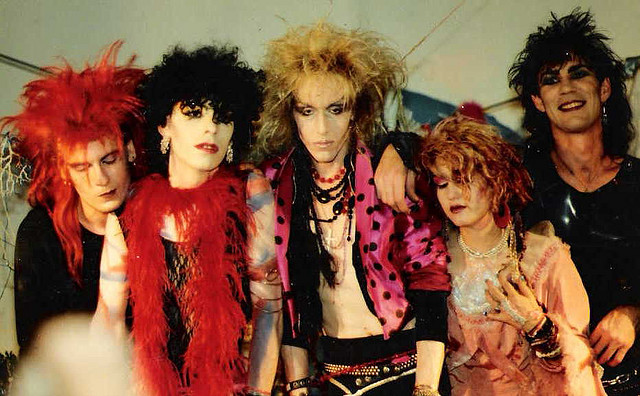
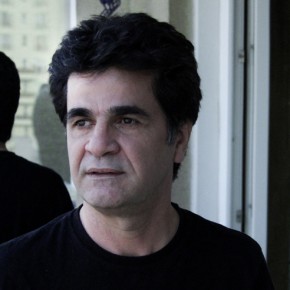
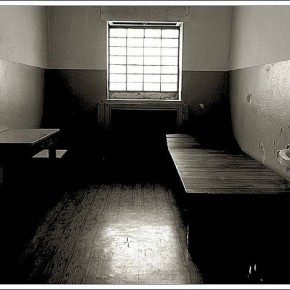

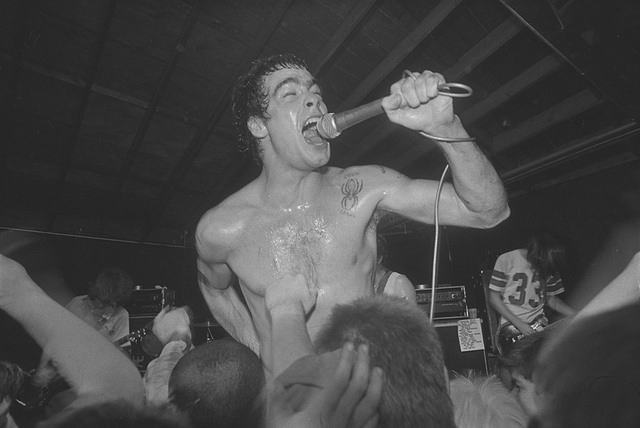
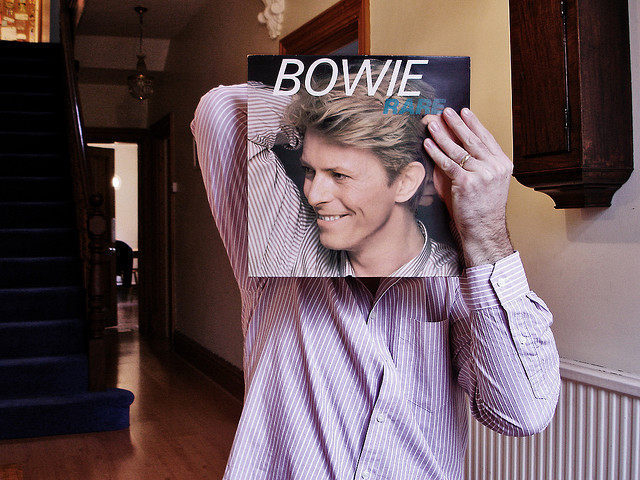
Phew!! What a thrilling read! So much info, so much detail, I am a musician in the building blocks phase and all of this data feels like a shot of caffeine directly to the neurons! Great stuff